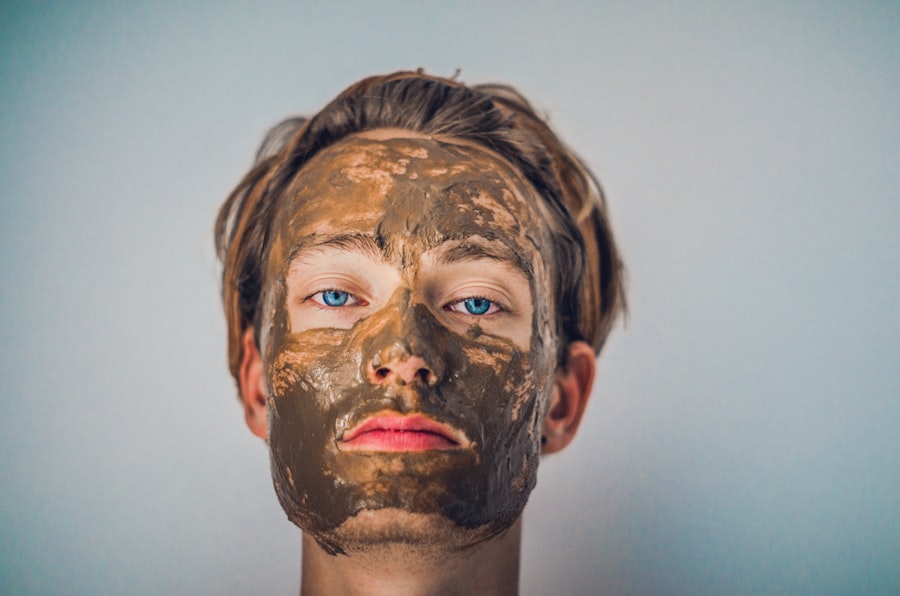When you embark on a journey to enhance your skin through laser treatments, understanding the significance of the interval between sessions is crucial.
Each laser treatment targets specific skin concerns, such as pigmentation, wrinkles, or acne scars, and your skin needs time to heal and regenerate between these sessions.
This healing period allows your skin to respond optimally to the treatment, ensuring that you achieve the best possible results. Moreover, the gap between sessions can significantly influence how your skin reacts to subsequent treatments. If you rush into your next session without allowing adequate time for recovery, you may not only compromise the effectiveness of the treatment but also increase the risk of adverse reactions.
Your skin requires time to process the changes initiated by the laser, and this recovery phase is essential for minimizing side effects and maximizing benefits. By respecting the recommended intervals, you are investing in your skin’s long-term health and appearance.
Key Takeaways
- The gap between laser sessions is important for allowing the skin to heal and for optimal results to be achieved.
- Factors such as skin type, treatment area, and the type of laser used should be considered when determining the gap between laser sessions.
- Different skin types may require different gaps between laser sessions for the best results and to minimize potential risks.
- The type of laser treatment being used can impact the recommended gap between sessions, with more aggressive treatments requiring longer gaps for healing.
- Shortening or lengthening the gap between laser sessions can increase the risk of side effects and may compromise the overall results.
- To maintain results between laser sessions, it is important to follow post-treatment care instructions and to protect the skin from sun exposure.
- Scheduling laser sessions at regular intervals as recommended by a professional can help achieve optimal results and minimize potential risks.
- It is important to consult with a professional to receive personalized recommendations on the gap between laser sessions based on individual skin type and treatment goals.
Factors to Consider When Determining the Gap Between Laser Sessions
Several factors come into play when determining the appropriate gap between your laser sessions. One of the most significant considerations is your skin type. Different skin types react differently to laser treatments, and understanding your unique characteristics can help tailor a schedule that works best for you.
For instance, individuals with sensitive skin may require longer intervals to allow for adequate healing, while those with more resilient skin might tolerate shorter gaps. Another critical factor is the specific type of laser treatment you are undergoing. Various lasers target different skin issues and have distinct recovery times.
For example, ablative lasers, which remove layers of skin, typically necessitate longer recovery periods compared to non-ablative lasers that stimulate collagen production without damaging the surface layer. Additionally, your age, overall health, and lifestyle choices can influence how quickly your skin heals.
Recommended Gap Between Laser Sessions for Different Skin Types

When it comes to scheduling your laser sessions, recommendations can vary based on your skin type. For individuals with normal or combination skin, a typical gap of four to six weeks between sessions is often suggested. This timeframe allows for sufficient healing while still maintaining momentum in your treatment plan.
However, if you have oily or acne-prone skin, you might find that shorter intervals of three to four weeks are effective in addressing breakouts and promoting clearer skin. On the other hand, if you have sensitive or dry skin, it’s advisable to extend the gap between sessions to six to eight weeks. This additional time allows your skin to recover fully and reduces the risk of irritation or adverse reactions.
Ultimately, understanding your skin type and its specific needs will guide you in determining the most effective schedule for your laser treatments, ensuring that you achieve optimal results without compromising your skin’s health.
The Impact of the Type of Laser Treatment on the Gap Between Sessions
| Laser Treatment Type | Gap Between Sessions (in weeks) |
|---|---|
| Carbon Dioxide (CO2) Laser | 4-6 weeks |
| Erbium YAG Laser | 3-4 weeks |
| Q-switched Nd:YAG Laser | 6-8 weeks |
The type of laser treatment you choose significantly impacts how long you should wait between sessions. For instance, if you opt for a fractional CO2 laser treatment, which is known for its effectiveness in treating deep wrinkles and scars, you may need to allow a gap of four to six weeks between sessions. This type of treatment involves more extensive skin resurfacing and requires a longer recovery period to ensure that your skin heals properly.
Conversely, if you select a non-ablative laser treatment like an Nd:YAG laser, which primarily focuses on stimulating collagen production without damaging the outer layer of skin, you might be able to schedule sessions closer together—typically every three to four weeks. Understanding these distinctions is essential for creating a treatment plan that aligns with your goals while prioritizing your skin’s health. By considering the specific characteristics of each laser type, you can make informed decisions about how frequently to schedule your sessions.
Potential Risks of Shortening or Lengthening the Gap Between Laser Sessions
While it may be tempting to shorten the gap between laser sessions in hopes of achieving faster results, doing so can lead to several potential risks. One significant concern is the increased likelihood of adverse reactions such as redness, swelling, or even scarring. When you don’t allow enough time for your skin to heal, it may not be able to handle the intensity of subsequent treatments effectively.
This can result in complications that not only hinder your progress but may also require additional time and care to resolve. On the flip side, lengthening the gap between sessions can also have drawbacks. If you wait too long between treatments, you may lose some of the benefits gained from previous sessions.
Your skin may revert to its original condition before you have a chance to build on the improvements made through laser therapy. Striking a balance is essential; adhering to recommended intervals ensures that you maximize results while minimizing risks. By following professional guidelines and listening to your body’s signals, you can navigate these potential pitfalls effectively.
Tips for Maintaining Results in the Gap Between Laser Sessions

Maintaining results during the gap between laser sessions is just as important as the treatments themselves. One effective strategy is to adopt a consistent skincare routine tailored to your specific needs. Incorporating gentle cleansers, moisturizers, and sun protection can help preserve your skin’s health and enhance the effects of your laser treatments.
Additionally, consider using products that contain ingredients like hyaluronic acid or peptides, which can support hydration and collagen production during this interim period. Another crucial aspect is staying hydrated and maintaining a balanced diet rich in vitamins and antioxidants. Proper nutrition plays a significant role in skin health and can aid in recovery after each session.
Foods high in omega-3 fatty acids, such as salmon and walnuts, can help reduce inflammation and promote healing. Furthermore, avoiding excessive sun exposure and using sunscreen diligently will protect your skin from damage while it heals and maintains its improved appearance.
How to Schedule Laser Sessions to Achieve Optimal Results
Scheduling your laser sessions effectively requires careful planning and consideration of various factors discussed earlier. Start by consulting with a qualified professional who can assess your skin type and recommend an appropriate treatment plan tailored to your needs. They will take into account not only the type of laser treatment but also your individual response to previous sessions when determining an optimal schedule.
Once you have established a timeline for your treatments, mark them on your calendar and set reminders for yourself. Consistency is key in achieving optimal results; therefore, adhering to this schedule will help ensure that you stay on track with your skincare goals. Additionally, remain open to adjustments based on how your skin responds after each session—your practitioner may suggest modifying intervals based on observed outcomes or any changes in your skin condition.
Consulting with a Professional for Personalized Recommendations on the Gap Between Laser Sessions
Ultimately, consulting with a professional is essential for receiving personalized recommendations regarding the gap between laser sessions. A licensed dermatologist or aesthetician will have the expertise needed to evaluate your unique skin characteristics and treatment goals comprehensively. They can provide insights into how different factors—such as age, lifestyle, and specific concerns—affect your treatment plan.
During these consultations, don’t hesitate to ask questions about any uncertainties you may have regarding scheduling or aftercare. A knowledgeable professional will be able to guide you through every step of the process, ensuring that you feel confident in your decisions while prioritizing both safety and effectiveness. By working closely with an expert, you can create a tailored approach that maximizes results while keeping your skin healthy and radiant throughout your laser treatment journey.
When considering the best gap between laser sessions on the face, it is important to consult with a professional to determine the most effective treatment plan. For more information on laser hair removal and skincare, check out this article on inlaserhairremoval.com. This article provides valuable insights and tips on how to customize your skincare routine and achieve optimal results.
FAQs
What is the best gap between laser sessions on the face?
The best gap between laser sessions on the face can vary depending on the type of laser treatment being used and individual skin characteristics. It is important to consult with a qualified dermatologist or laser technician to determine the ideal gap for your specific needs.
Why is the gap between laser sessions important?
The gap between laser sessions is important to allow the skin to heal and recover from the previous treatment. It also allows for the optimal effectiveness of the laser treatment and reduces the risk of potential side effects.
What factors can affect the gap between laser sessions?
Factors that can affect the gap between laser sessions include the type of laser being used, the specific skin concerns being addressed, the individual’s skin type and sensitivity, and the recommendations of the treating professional.
Are there any general guidelines for the gap between laser sessions on the face?
While there are general guidelines for the gap between laser sessions, it is important to follow the specific recommendations of the treating professional. In general, the gap between laser sessions on the face can range from 4 to 6 weeks for most types of laser treatments.
What are the potential risks of not following the recommended gap between laser sessions?
Not following the recommended gap between laser sessions can increase the risk of skin irritation, burns, hyperpigmentation, and other adverse effects. It can also reduce the effectiveness of the treatment and lead to suboptimal results.





